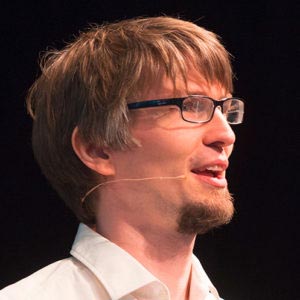Camunda presents Orchestration and Communication Patterns between Microservices
A four-part masterclass providing you with skills to develop new features faster, be more agile making changes, and scale your organization to new heights.
Watch On Demand
The advantages of microservices can be a double-edged sword.
How?
Microservices architectures are loosely coupled by design, allowing for autonomous teams to work in parallel.
At the same time, communication between services is essential to execute many business requirements that stretch across an organization. This requires services to be called not only at the right time and in the correct order but having a backup plan in case of failure.
Over the course of the masterclass, Camunda Co-Founder and Chief Technologist Bernd Ruecker digs deep into all aspects of microservices communication and orchestration.
By watching all four sessions, you’ll walk away with actionable insights and examples of:
- How to orchestrate microservices communication patterns for optimal results.
- The proper implementation of process automation to achieve the desired outcomes with microservices architectures.
- The three basic strategies for consistency problems (ignore, apologize, or resolve)
- Common communication protocols best practices.
Communication Between Loosely Coupled Microservices
Microservices architectures require services to be as loosely coupled as possible. However, communication between loosely coupled services is essential to correctly execute on business requirements. There are several considerations to think about:
- Synchronous, asynchronous or event-driven communications are all possible solutions. However, you need to consider the tradeoffs while deciding which form of communication would work best for your requirements.
- How does your architecture impact coupling? For instance, asynchronous communication reduces temporal coupling between services.
- Other consequences for consideration; for example, synchronous communication requires certain resilience patterns.
This session will help answer such questions. In addition, you will be able to better understand both architectural implications as well as their effect on productivity.
Patience Pays Off - Benefits of Long-running Microservices
"Please try again in a few minutes" - a notification you never want to see. Yet most services are architected with immediate responses in mind, leading to exactly this response in the case of service failure.
Long-running capabilities can drastically improve this dreaded outcome. While services might still react immediately in the happy or ideal case, they can also easily switch to asynchronous responses. Leveraging persistent state allows waiting for seconds, minutes, or even weeks when sorting out failures. Using long-running capabilities is of course not limited to failure scenarios. Many things in life take time, especially waiting for humans to make a decision, for services to respond, for back and forth communications with customers.
There are several tools that can simplify the implementation of long-running behaviors, one such tool is process automation. This session will provide real-world examples to help you learn the proper implementation of process automation to achieve the desired outcomes with microservice architectures.
Business Transactions and Consistency When Using Microservices
By their very design, monolithic architectures make it incredibly easy to implement atomic operations, isolate different threads and guarantee consistency of data.
Unfortunately, with modern distributed systems the same rules can’t (and don’t) apply.
This means you are in charge of dealing with consistency yourself.
During this session, Bernd Ruecker will explore how to think about and deal with consistency on the business level. He will cover:
- What inherent problems exists in managing consistency with microservices
- The three basic strategies for consistency problems (ignore, apologize, or resolve)
- Why your approach to solving inconsistencies depends on the business need
- How to take on consistency challenges with a workflow engine
3 Superpowers for Next Level Microservices Orchestration
Microservices, Cloud, Automation.
No, these aren’t just current buzzwords — they are trends you cannot afford to miss out on. But how can organizations automate processes in the context of these new paradigms, technologies, and workflows? In this session, you will learn about three “superpowers” that make this possible: continuous delivery, a cloud-native mindset, and BizDevOps.
Watch now to learn more about:
- How to leverage each of these powers in the context of process automation.
- The single most important rule in determining how to automate processes.
- What to do if you're struggling to get buy-in from leaders in your organization.
Instructor
Bernd Ruecker
Co-Founder and Chief Technologist, Camunda

Bernd Ruecker is a software developer at heart who has been innovating process automation deployed in highly scalable and agile environments of industry leaders such as T-Mobile, Lufthansa, ING and Atlassian. He contributed to various open-source workflow engines for more than 15 years. Bernd is the Co-Founder and Chief Technologist of Camunda, author of "Practical Process Automation" and co-author of "Real-Life BPMN". He is constantly discussing new process automation paradigms that fit into modern architectures around distributed systems, microservices, domain-driven design and event-driven architecture.